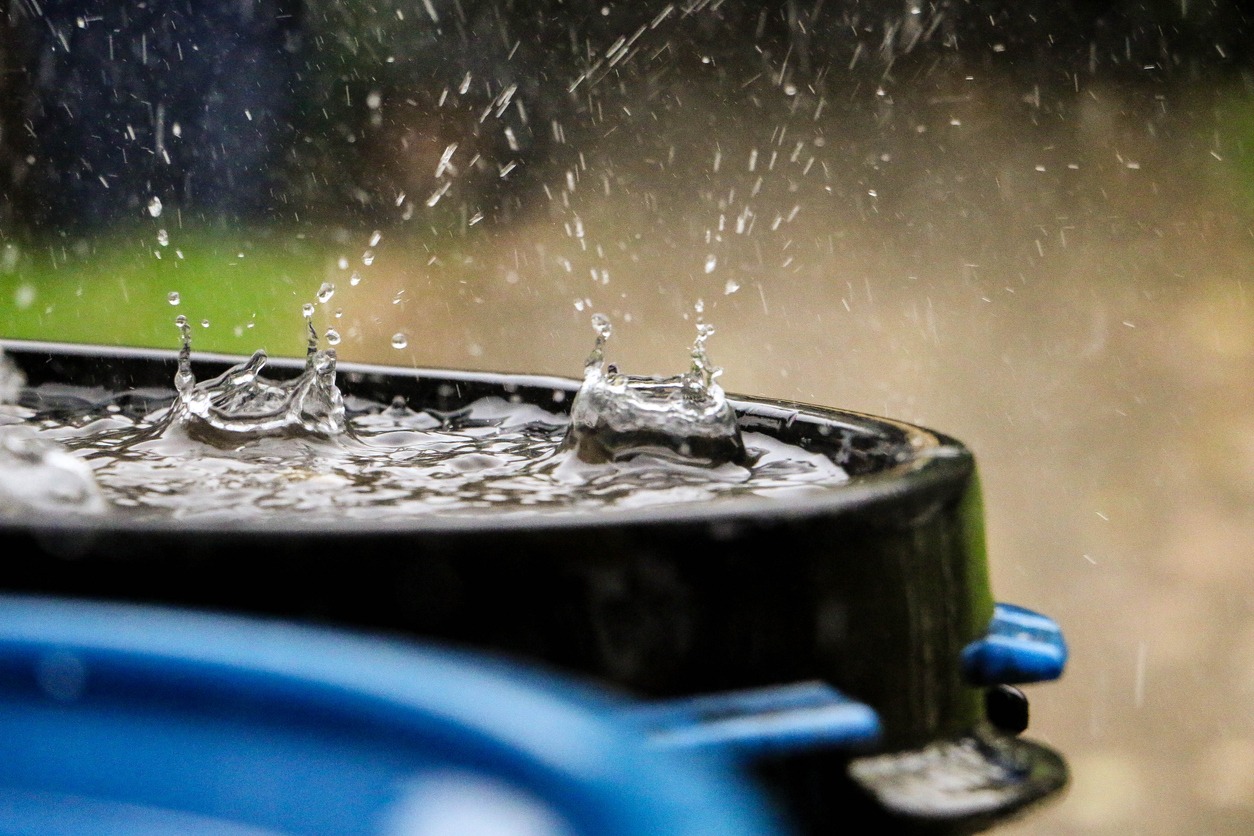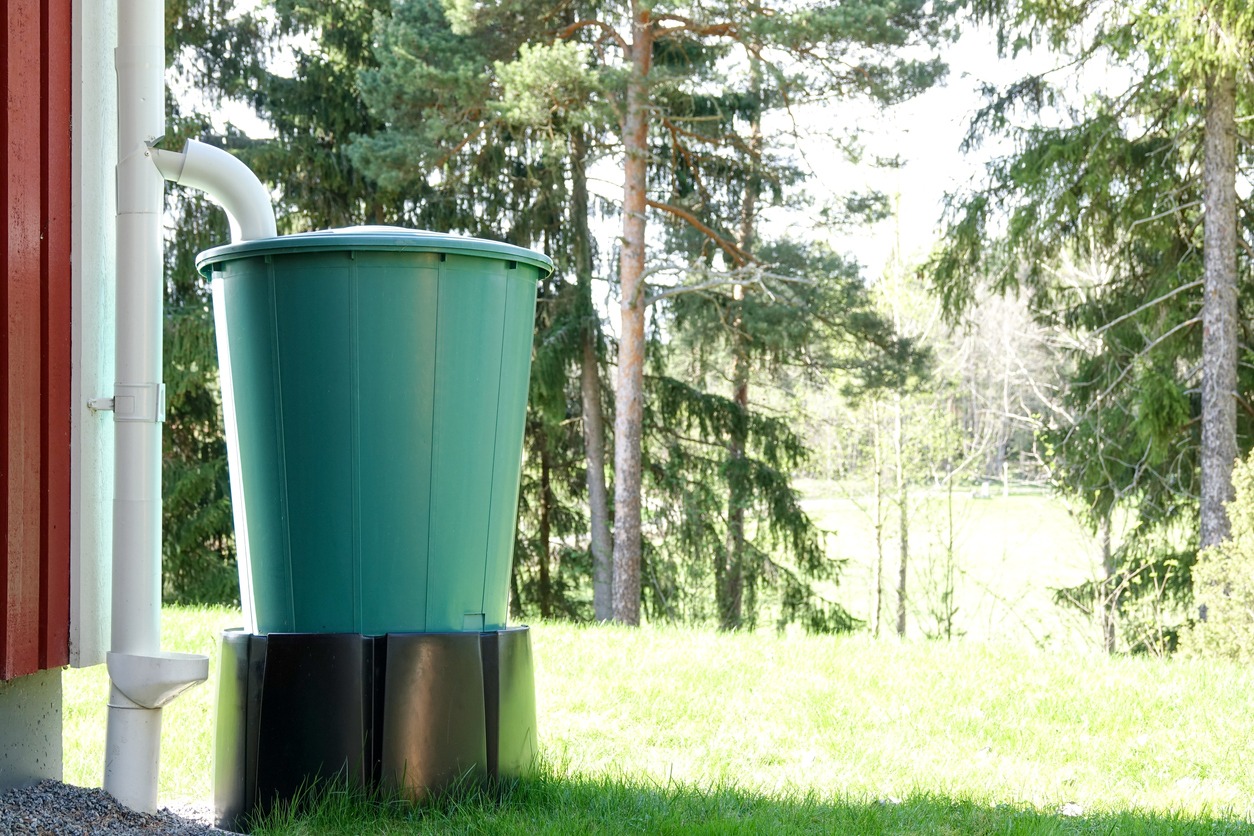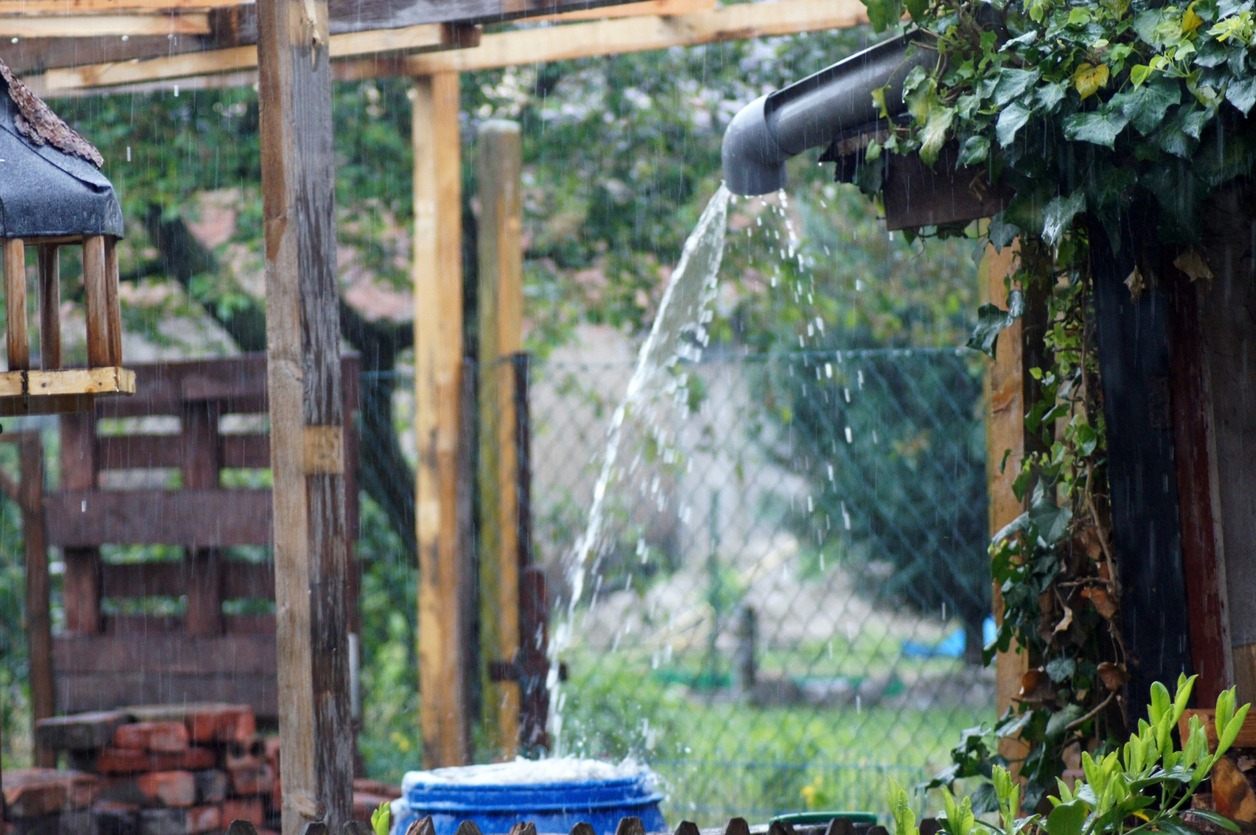The act of collecting and storing rainwater to use it at a later time is known as rainwater harvesting, and it is an environmentally friendly and sustainable practice. In recent years, this time-honored method has seen a resurgence in popularity thanks to the efforts of communities all over the world to alleviate water scarcity and lessen their reliance on traditional water sources. The installation of a rainwater harvesting system can be beneficial to both the environment and homeowners because it can save water, reduce the amount of stormwater runoff, and reduce the amount of money spent on utility bills.
This detailed guide aims to provide a step-by-step overview of the process that is involved in setting up a rainwater harvesting system, along with tips for the efficient application of the system. This guide will equip you with the knowledge and skills necessary to implement a successful rainwater harvesting project by guiding you through the process of selecting the appropriate components and optimizing the performance of the system.
What are the Benefits of Rainwater Harvesting?
The collection of rainwater is essential for a variety of different reasons. In the initial stage, it contributes to the preservation of the environment by lessening the reliance placed on conventional water supplies, such as rivers and aquifers located underground. This helps preserve these resources for future generations and mitigates the strain on water systems that are already being put under a lot of stress.
Second, it helps to conserve water in significant ways, which is a very important function. We can reduce our reliance on potable water for activities such as irrigation and the flushing of toilets, and we can even use collected rainwater for drinking in places where it has been appropriately purified and is considered safe to do so.
In addition, collecting rainwater helps prevent flooding by reducing the amount of water that runs off. It helps reduce the volume of water that runs off into stormwater drains during heavy downpours by capturing rainwater during those downpours. This helps prevent flooding and erosion, two problems that can be caused by excessive runoff. This is beneficial to both the urban and rural environments.
Furthermore, it encourages self-sufficiency and resiliency in the communities it serves. People who rely on rainwater harvesting are less reliant on centralized water supply systems, which can be susceptible to disruptions, particularly in the event of natural disasters or other emergencies.
In addition, rainwater is naturally gentle and does not contain many of the minerals or chemicals that are present in groundwater. Because of this, it is perfect for a variety of uses that do not involve consumption, such as washing clothes, watering plants, and even some industrial processes.
Last but not least, collecting water from rainstorms is beneficial to the health of the environment. It helps reduce soil erosion and minimizes contamination of natural water bodies by reducing the runoff of pollutants from urban areas into natural waterways. This is accomplished by reducing the amount of urban area runoff.
Overall, collecting rainwater is a practice that is both environmentally friendly and essential because it helps alleviate the problem of scarce water supplies, saves money by reducing waste, and improves the health of both communities and the environment.
What Are the Different Types of Rainwater Harvesting Systems?
Rainfall is collected and stored for use at a later time by using various types of rainwater harvesting systems. There are many different kinds of rainwater harvesting systems, and each one is designed to work in a specific environment and fulfill particular requirements. The following are some of the most widespread types:
Direct Catchment System
Rooftop Catchment
Catching rainwater from rooftops is one of the rainwater harvesting methods that is used the most frequently. It entails gathering rainwater in a container directly from the roof of a structure. The rainwater is collected in a storage tank after traveling along gutters and downspouts. This system is not only effective but also economical, and it is well-suited for use in both urban and rural settings.
Paved Surface Catchment
Rainwater can be collected from hard, impermeable surfaces, such as driveways, pathways, or courtyards, using a technique known as “paved surface catchment.” It does this by directing the flow of rainwater into a storage tank through the use of gutters and channels. This technique works well in locations where there is a preponderance of large paved surfaces.
Land Surface Catchment
Rainwater can be collected directly from bare, unpaved ground through a process known as land surface catchment. This approach is frequently utilized in agricultural settings, which typically make use of expansive tracts of land. It is possible to collect rainwater for use in irrigation or livestock farming if the water is first channeled into storage systems using ditches or channels.
Surface Runoff Harvesting
Surface Storage
Rainfall is collected by surface storage systems, which can use either natural or man-made reservoirs, ponds, or lakes. These reservoirs are constructed to temporarily hold rainwater, which stops it from running off the land as quickly. The water that has been stored can be utilized for a variety of purposes, such as irrigation, watering livestock, and even restocking depleted groundwater levels.
Percolation Pits
Rainwater can be collected in percolation pits, which are depressions in the ground that have been dug out and filled with gravel. The pits allow for the infiltration of rainwater into the soil, which in turn helps to replenish groundwater levels. This method is especially helpful in regions that have a high demand for groundwater but a low availability of water from surface sources.
Stormwater Management Systems
Detention Basins
Large man-made structures known as detention basins are constructed to temporarily store stormwater runoff. They control the flow of water, which lessens the likelihood of flooding further downstream during periods of heavy precipitation. The management of stormwater in urban areas requires the use of detention basins as an essential component.
Retention Pods
Retention ponds are another type of structure that can be used to hold stormwater after it has been collected. On the other hand, they usually keep a more consistent water level, and they frequently provide habitat for aquatic life. They contribute significantly to the management of urban water, helping to preserve biodiversity while reducing the likelihood of flooding.
Subsurface (In-ground) Systems
In-ground Storage Tanks
Large containers that are buried underground are known as in-ground storage tanks. They are an effective method of storing rainwater, minimizing the need for additional space, and addressing concerns about their appearance. Because these tanks can store significant amounts of water, they are well-suited for use in urban areas with restricted space.
Cisterns
Rainwater is collected and stored in cisterns, which are typically made of concrete or plastic and have a cylindrical shape. They can be installed either above or below ground depending on the situation. Cisterns offer a dependable supply of water and can be incorporated into a wide variety of architectural designs thanks to their adaptability and versatility.
Hybrid Systems
Rainwater harvesting systems that are hybrid combine aspects of several different approaches to achieve the highest possible level of effectiveness. For instance, an advanced filtration method might be incorporated into a hybrid system along with underground storage and rainwater collection from roofs.
Automated Systems
Rainwater collection, filtration, and distribution can all be made more efficient with the help of automated rainwater harvesting systems that incorporate sensors and control mechanisms. These systems are developed with efficiency in mind, and as a result, they frequently incorporate functions like automated tank overflow prevention and filtration monitoring.
What are the Components of a Rainwater Harvesting System?
The typical structure of a rainwater harvesting system includes several important components, each of which plays an important part in the process of collecting, storing, and distributing rainwater. The following is a list of the primary elements that make up a rainwater harvesting system:
Catchment Area: This is the surface that the rainwater collects from to be used. It is typically the topmost level of a structure; however, it could also be a paved surface, such as a driveway, or even an undeveloped patch of land.
Gutters and Downspouts: Rainwater is collected and directed along the edges of a roof through the use of gutters, which can be either channels or pipes. The collected rainwater is transported from the gutters to the storage tank via downspouts, which are essentially pipes.
Leaf Screens or Filters: These are devices that are installed in the gutters or at the point where the downspouts enter the house to stop debris, leaves, and other potentially harmful contaminants from going into the storage tank.
First Flush Diverter: This is a device that is responsible for redirecting the initial runoff from the catchment surface away from the storage tank. This runoff may contain contaminants such as bird droppings or dust. This contributes to an improvement in the quality of the water that has been stored.
Storage Tank: The rainwater that has been collected is put into the storage tank and kept there until it is required for use. There is a wide variety of materials that can be used to construct tanks, including concrete, fiberglass, plastic, and metal. They come in a variety of forms and dimensions, which are determined by the requirements and the amount of space that is available.
Overflow System: When the water level in the tank rises above its capacity, an overflow system allows any additional water to be safely drained. This eliminates the risk of flooding and protects the system from damage.
Filtration and Treatment System: It is possible to install a filtration and treatment system for the rainwater that has been collected, but this will depend on how the water will be used. This may involve the use of filters, screens, ultraviolet light treatment, or any number of other procedures to guarantee that the water satisfies the required quality standards.
Distribution System: This includes the pipes, valves, and fixtures that are responsible for transporting the collected rainwater from the storage tank to the location where it will be used. It may be used for activities such as watering plants and flushing toilets, and it may also be used for activities such as laundry and other non-potable uses.
Maintenance Access: A rainwater harvesting system that is thoughtfully designed will have points that are simple to access for maintenance and cleaning. This ensures that the system continues to function properly and that the water that is stored continues to be of high quality.
It is essential to keep in mind that the specific components and the complexity of those components will change depending on a variety of factors, including the size of the system, the purpose for which it will be used, the regulations that are in place in the area, and the amount of money that is available. A consultation with a rainwater harvesting specialist can be helpful in the process of designing and putting into action a functional system.
Rainwater Harvesting Installation Process
Site Assessment: Choosing the Perfect Spot
Before beginning the installation, you should first carry out a comprehensive inspection of your property. Locate an area that is appropriate for the installation of the rainwater harvesting system. Ideal conditions include a level, open area that provides easy access to the catchment surface, which is typically a roof. Check to see that the location you’ve chosen doesn’t violate any rules that are specific to the area.
Determining Water Needs: Defining Your Purpose
Determine exactly what it is that you plan to do with the collected rainwater. Do you intend to use it for non-potable purposes, such as irrigation flushing toilets, or some other application? Once you have an understanding of your water requirements, you can more easily calculate the size and capacity of the system.
Calculating Catchment Area: Measuring the Source
Take some measurements of the location where you intend to collect rainwater. This will be the surface of the roof for the vast majority of residential installations. It is essential to perform an accurate calculation of the catchment area because this has a direct bearing on the volume of water that can be gathered.
Selecting the Storage Tank: Choosing the Right Container
You should select a tank for storage that fits your requirements and the space you have available. Several different materials can be used to construct tanks, including concrete, fiberglass, plastic, and metal. Make sure the tank is durable, stable, and specifically designed for the storage of rainwater.
Installing Gutters and Downspouts: Directing the Flow
You should install gutters along the edges of the roof if you are going to use it as a catchment surface. These will direct the flow of rainwater to the downspouts, which will then direct the water to the storage tank. Check that the gutters have the appropriate slope so that water can flow through them effectively.
Adding a First Flush Diverter (Optional): Enhancing Water Quality
Think about installing a diverter for the first flush. This apparatus redirects the initial runoff away from the tank, thereby preventing the accumulation of contaminants such as bird droppings and dust in the storage area. Even though it’s not required, doing so can significantly boost the quality of the water that’s been stored.
Installing Leaf Screens or Filters: Keeping it Clean
Installing screens or filters in the gutters or at the point where the downspouts enter the house is one way to stop debris from making its way into the tank. It is essential for the effectiveness of the system that these components receive routine maintenance.
Setting Up the Overflow System: Managing Excess Water
Installing an overflow system will guarantee that any excess water will be directed away from the tank in a secure manner. Flooding and other potentially damaging effects of heavy rain are avoided as a result of this measure.
Filtration and Treatment (Optional): Ensuring Water Quality
Consider installing a filtration and treatment system if you intend to use the water for drinking. This will ensure that the water that is harvested is of an acceptable quality.
Setting Up the Distribution System: Delivering the Water
To transport the harvested water from the tank to the various points of use, pipes, valves, and fixtures need to be installed. Incorporate a pump if one is required to achieve the desired level of water pressure for the applications you have in mind.
Connecting to Downspouts: A Secure Connection
Check twice to make sure that the downspouts are correctly connected so that water can flow into the storage tank. This is an essential step in making certain that the system will operate as intended.
Calibration and Monitoring (Optional): Keeping Tabs on Performance
You should think about installing monitoring devices so that you can measure the water levels, water quality, and the performance of the system. This step is completely optional, but it has the potential to provide useful information that will help you optimize your rainwater harvesting system.
Conducting a Test Run: Putting it to the Test
Rainwater should be allowed to pass through the system so that its functionality can be evaluated. Examine the area for any signs of leaking, obstructions, or malfunctions. Take prompt action regarding any concerns.
Maintaining and Monitoring: Ensuring Longevity
Perform routine checks and maintenance on the system. This involves cleaning the gutters, the filters, and the tank, in addition to making sure that all of the components are operating as they should.
Is Rainwater Harvesting Legal?
Rainwater harvesting is generally considered to be within the bounds of the law in many parts of the world. However, specific regulations and requirements may change depending on the policies of the local government and the guidelines established by the jurisdiction. It is important to check with local authorities or consult relevant ordinances to ensure compliance with any applicable laws or restrictions related to rainwater harvesting in a particular area. This can help ensure that you do not run afoul of any regulations.
How Much Does a Rainwater System Cost?
The cost of installing a rainwater harvesting system is highly variable and can be determined by several different factors. These include the size of the system, the quality of the materials used, the cost of labor, the geographical location, and any additional features or technologies that are incorporated. When making a preliminary cost estimate for the installation of a rainwater harvesting system, it is imperative to take into account the aforementioned factors. It is possible to obtain a more precise estimate of the particular costs involved by consulting with professionals or by obtaining multiple quotes from different suppliers and contractors.
Can You Drink Harvested Rainwater?
Rainwater that has been collected can, indeed, be used for drinking; however, it must first undergo the appropriate purification processes before it can be consumed safely. Rainwater may, in the absence of proper treatment, contain contaminants and impurities that are hazardous to human health.
To make rainwater drinkable, it is recommended to use a dependable filtration system, such as ultraviolet (UV) treatment, sediment filters, and possibly a disinfection process like chlorination. This is the case because rainwater can contain a variety of microorganisms that can cause illness. When it comes to the treatment and consumption of rainwater that has been harvested, it is essential to comply with all applicable local health guidelines and regulations.
Conclusion
The installation of a rainwater harvesting system is a cornerstone for off-grid sustainability, providing hope to communities seeking self-sufficiency and environmental harmony. From site assessment to component integration, this meticulous process demonstrates the power of harnessing nature’s abundance for our needs.
Rainwater becomes an invaluable lifeline in off-grid settings where conventional resources are scarce. Its careful collection, storage, and treatment pave the way for a self-sustaining water supply that transcends urban infrastructure limitations. This simple but profound practice opens up new possibilities for domestic use, agriculture, and disaster preparedness.
We are stepping into a future defined by resourcefulness and resilience by embracing rainwater harvesting. It represents a pledge to live in harmony with nature, as well as a promise to our planet’s stewardship. Off-grid communities that adopt this sustainable approach pave the way for a brighter, more sustainable future. Rainwater harvesting is more than just a system; it is a declaration of our commitment to a world where sustainability is paramount.



